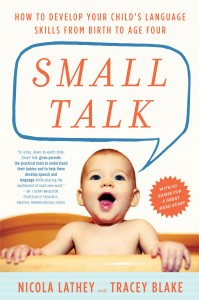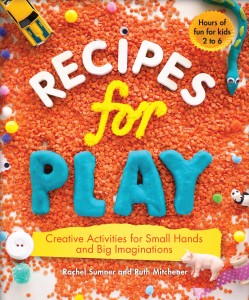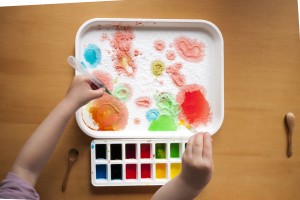Next time you’re out in public, take a look around you. How many children do you see with their noses buried in an electronic device, oblivious to everything except the screen in front of them? Chances are, you’ll spy quite a few.
Increasingly these days, parents seem to be using phones and tablets as makeshift babysitters, handing them a device to get the child to sit still and be quiet. Some of my Facebook friends post, on a regular basis, funny or sweet comments that involve their young kids—very young, around 2 years old—using an iPad. In other cases, I’ve noticed that slightly older children, age 7, or even age 5, have their very own tablet devices.
The only reason I can think of that a child, particularly one not old enough to have homework assignments, could possibly need something like that is to play games. There’s nothing wrong with games, of course, but the type you play on a computer lack some important qualities, such as real-life contact and communication, which are vital to growing children.
Research Encourages Interacting with Children to Give Them a Better Chance for the Future
Recently, perhaps in direct response to the rising rate of young children who either have their own handheld electronic or are provided ready access to someone else’s, a number of studies, articles, and books been published that explore the importance of language development at an early age and the ways you can encourage your children, which almost all call for as much direct human-to-human interaction as possible.
The New York Times published an article on June 24 (“Pediatrics Group Recommend Reading Aloud to Children from Birth”), which announced that the American Academy of Pediatrics is instating a new policy that advocates parents spend time reading books to their children, starting from birth. This is an exciting development that overlaps perfectly with the growing awareness of the “language gap,” which refers to the increasing disparity in the language skills of young children from different economic backgrounds, which can have adverse effects later in life.
Research shows that continuous interaction with parents or caregivers boosts brain development, and that the earlier this is started, the better. Not only does it increase children’s language development skills, it provides them with a greater awareness of and familiarity with the world that surrounds them. Remember, vocabulary, and therefore language and knowledge, isn’t established just by listening, but by interacting.
Ideas for Spending Important and Fun Quality Time with Kids
The appeal of handing your kids an electronic device that will keep them busy while you’re running errands or otherwise preoccupied is undeniable. But there are other things you can do that will be more beneficial to your child in the long run. This is an issue parents been worrying about for time eternal—there are most definitely other options out there besides just planting them in front of a screen. There are simple games they can play—or books you can read!—that provide quality time with your child.
 Our authors Nicole Lathey and Tracey Blake explore the topic of language development in depth in their book Small Talk, which looks at the six stages of language learning and offers ways to give your child a head start at communication. They discuss the importance of “Small Talk Time,” which promotes having at least 10 minutes of focused, one-on-one time with your child—meaning no electronics allowed!—and have also included games to play throughout the book that have been specially identified as encouraging your child’s development. Here are some of their suggestions:
Our authors Nicole Lathey and Tracey Blake explore the topic of language development in depth in their book Small Talk, which looks at the six stages of language learning and offers ways to give your child a head start at communication. They discuss the importance of “Small Talk Time,” which promotes having at least 10 minutes of focused, one-on-one time with your child—meaning no electronics allowed!—and have also included games to play throughout the book that have been specially identified as encouraging your child’s development. Here are some of their suggestions:
Games to Play When You Have 10 Minutes to Spare
Say What You See: Provide children a running commentary of what they’re doing while they play. Putting words to their ideas and actions as they explore allows them to hear that word repeatedly in its proper context, which promotes memory retention and encourages children to try the word.
Simon Says: Give your child an instruction, such as “turn around,” “jump three times,” or “touch your nose.” Encourage your child to repeat the instruction and then carry it out.
Word Association: Tell your child a word, like “play,” and have him name an associated word, such as “game” or “school.” Continue taking turns nam
Activities to Try Instead of an iPad
What’s in the Bag?: Put some objects into a bag. Give the bag a shake to generate enthusiasm, then ask “What’s in the bag?” Encourage your child to pull something out of it, then tell them “It’s a . . . [wait to allow your child a chance to say a sound, but if she doesn’t, complete the sentence] . . . car.” It’s best to use objects that fit within a certain category—for example, vehicles, clothes, snacks, toys, or animals—since words are stored better in the language center of the brain when they’re learned within particular sets.
Flash-card games: Find a pack of simple flash cards, which are very useful for a number of word games. Try “stepping stones” by laying the cards on the floor and telling each other which picture to jump on, or “fishing” by tying a magnet to a string, attaching a paper clip to the card, and having your child fish for the cards and name the ones they picked up. The classic card game “Memory” is also a wonderful way to promote language development.
 If you’re looking for ideas to spend quality fun time with your kids, while encouraging development and growth, Ruth Michener and Rachel Sumner, a very creative sister duo, have put together more than 35 easy, inexpensive, and imaginative activities in Recipes for Play. No matter where you are—waiting for food at a restaurant, in line at the store, enjoying a warm summer day in your backyard, cooped up inside on a rainy day—there are boundless ways to keep your child entertained without resorting to the iPad or TV.
If you’re looking for ideas to spend quality fun time with your kids, while encouraging development and growth, Ruth Michener and Rachel Sumner, a very creative sister duo, have put together more than 35 easy, inexpensive, and imaginative activities in Recipes for Play. No matter where you are—waiting for food at a restaurant, in line at the store, enjoying a warm summer day in your backyard, cooped up inside on a rainy day—there are boundless ways to keep your child entertained without resorting to the iPad or TV.
It’s easy to sneak some learning in, too, since Ruth and Rachel made sure all their ideas include teachable moments, such as what happens when you mix blue and red, or drop paint from different heights. Once you excite your child’s curiosity, they’ll be absorbed. After all, isn’t childhood one endless series of questions?
Things to Do on a Rainy Day Instead of Watching a Movie
Taped Up: Use painter’s tape to turn an entire room into a racetrack, a zoo, or a work of art. Create roadways, encosures, or fun designs, or use the tape like chalk to set up indoor games such as hopscotch. When the kids have had enough, or the sun starts shining, just peel up the tape to clean up.

Fizzdroppers from Recipes for Play
Fizz Droppers: Kids will love seeing what happens when you mix baking soda and vinegar. Add food coloring to some vinegar, sprinkle a baking soda “canvas” into a dish with edges, and use eye-droppers as paint brushes. Watch your child enjoy the volcanic results as they play with science.
Things to Do While Waiting—In the Car, At the Doctor, In Line, Etc.
Measurements: The simple idea of quantifying anything is actually quite appealing to kids, and helps them to understand mathematics. No matter where you are, there will always be something to quantify. Ask questions like, “How many yellow cars do you spot when we drive to Grandma’s?” or “Can you count the number of babies we see?”
Tie It Up: Create a lacing card to carry around with you: on a piece of cardstock or other heavy paper, trace around a small child’s shoe and punch out two rows of three holes. Have your child use a shoelace or piece of string to lace up the “shoe.” Your child will brush up on her fine motor skills while being quietly entertained.
By interacting with them regularly and encouraging tactile play, kids are able to gather the vital information that they need about the world while they’re developing mentally and physically. While some computer games may be promoted as educational and beneficial, and could promote certain skill-sets, in reality, interaction with a two-dimensional interface on a screen just isn’t an adequate substitute for looking up and living in the physical world, especially for young children.


